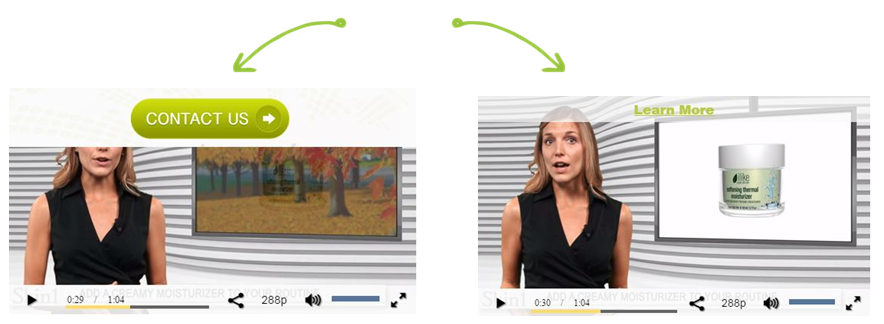Video marketing is popular because it has proven success. When you consider that 70 percent of businesses see more conversions from video than plain text, and social video sharing has skyrocketed in the past two years, it was a no-brainer to include this format in our top 12 content trends.
Now that video is mainstream, the question isn’t if you should be invest, but how you can invest smarter.
Here are four pieces of advice I suggest while working with clients on video strategies:
Provide next steps for viewers
Remember that every video should act as a step in your buyer’s’ journey. Including a call to action (CTA) to learn more information about your products and services right within your video is a best practice for user experience. These work best when they don’t interrupt the user experience, but complement it.
Check out what this can look like:

Keep it short
Refrain from posting videos that exceed two minutes. If you’ve ever been in the editing suite, you know this is harder than it appears, but once a video hits the two–minute mark, you’ll be sharing information to a very small crowd.
If you have tons of information to share, consider creating a video series that breaks up the information into bite-sized videos, or create a few different versions of one video: a 30-second version for social media, and perhaps a 2-minute-plus video for a website landing page.
Another consideration is the audio factor. When people are scrolling through videos on social media, they’re likely to see a video without audio. For inspiration here, look no further than BuzzFeed Food and Tasty videos. These are great examples of taking a recipe and packaging it in less than 30 seconds. No audio required, and users get everything they need, fast.
Host on your site
Social media might be the best place to promote videos, but if you’re looking for SEO value from your strategy, you’ll want to make sure you’re hosting on both social and your website.
In the 2014 Video Content Metrics Benchmark Report, 46 percent of surveyed marketers said they were using a combination hosting strategy, rather than one or the other. More importantly, the companies using the combined approach are seeing better returns.
Consider the goals of your video when you’re deciding where to host it. If you’re simply looking for brand awareness or the possibility of going viral (for the record, “viral” isn’t a realistic marketing goal), social media hosting might be the way to go. But, if conversions and lead garnering are your top initiatives, you’re going to want to make sure you’re hosting on your site first and foremost.
Best place to start? Testimonials
We work with a lot of businesses that have niche products and need to show their unique value quickly. This is the perfect opportunity for a testimonial video, and it’s always one of the first video formats I recommend to new clients (particularly those that are B2B.).
And you don’t have to just take my word for it. An Ascend2 study released earlier this year showed 51 percent of marketers cite testimonials as the most effective videos for marketing. These are also cited as the most challenging videos to make by 42 percent.
Here’s a look at a few client testimonial videos we’ve created at Brafton (notice they hover in the 1-2 minute mark. You can check out more video client examples on our Fuel Your Brand YouTube page.)
Want more 2016 content marketing trends? Sign up for Brafton’s Newsletter, and get #12DaysofContent directly in your inbox.




